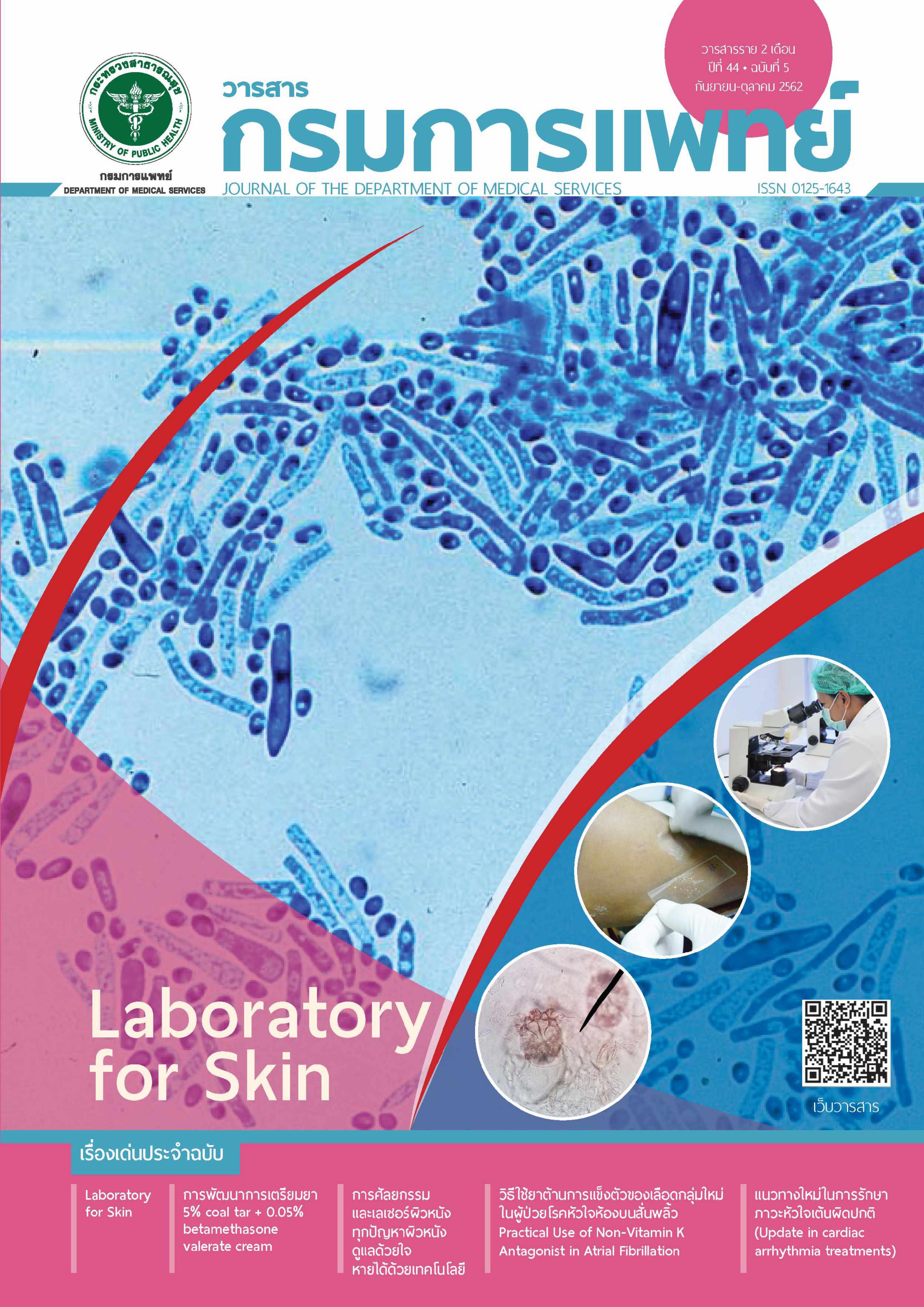Incidence and Associated Factors of Postoperative Nausea and Vomiting in Patients Undergoing Craniotomy
Keywords:
Nausea, Vomiting, Craniotomy, AnesthesiaAbstract
Background: Intracranial surgery is a risk factor of postoperative nausea and vomiting (PONV). Previous studies showed that the incidence rates of post craniotomy PONV varied from 10% to 74%. Most of them were retrospective, or observational studies. The objective of this study is to determine the incidence and risk factors of PONV after craniotomyat Ramathibodi Hospital.
Method: After ethical approval from the Ethical Clearance Committee on Human Rights Related to Researches Involving Human Subjects, the prospective study was performed. Postoperative nausea and vomiting were prospectively assessed at 1, 4, 24, 48, and 72 hours after elective craniotomy in 120 patients, 18 to 80 years old with American Society of Anesthesiologists (ASA) classifications I to IV. Patients characteristic, surgical-related, and anesthetic-related risk factors of postoperative nausea and vomiting were recorded and analyzed.
Result: The overall incidence of PONV at72 hours after elective craniotomy at Ramathibodi Hospital was 35%. The history of PONV / motion sickness (adjusted RR 46.611, 95% CI 4.077-532.924, p=0.002), postoperative opioid usage (adjusted RR 9.138, 95% CI 3.063-27.259, p<0.001), blood transfusion (adjusted RR 4.886, 95% CI 1.601-14.907, p=0.005) and suboccipital craniotomy (adjusted RR 8.134, 95% CI 2.052-32.239, p=0.003) are the risk factors of PONV. The incidence of PONV is significantly lower in the patients received steroid during the perioperative period (adjusted RR 0.274, 95% CI 0.08-0.936, p=0.039).
Conclusion: The cumulative incidence of PONV after craniotomy, was 35% at 72 hour. The associated risk factors were previous history of PONV/motion sickness, suboccipital surgery, blood transfusion, and postoperative opioids usage.
References
Ryu JH, Lee JE, Lim YJ, Hong DM, Park HP, Han JI, et.al. A Prospective, randomized, double-blind, and multicenter trial of prophylactic effects of ramosetronon postoperative nausea and vomiting (PONV) after craniotomy: comparison with ondansetron. BMC Anesthesiol 2014; 14: 63.
Christian C. Apfel. Postoperative nausea and vomiting. In: Ronald D. Miller, eds. Miller’s Anesthesia. 8th ed. Philadelphia: Elsevier Saunders; 2015. p. 2947-2973.
Concezione T. Management in postoperative nausea and vomiting after neurosurgery. In: Brambrink, Ansgar M., Kirsch, Jeffrey R., eds. Essentials of neurosurgical anesthesia & critical care. New York: Springer-Verlag. 2012. p. 709-718.
Latz B, Mordhorst C, Kerz T, Schmidt A, Schneider A, Wisser G, et al. Postoperative nausea and vomiting in patients after craniotomy: incidence and risk factors. J Neurosurg 2011; 14:491–96.
Gan TJ, Diemunsch P, Habib AS, Kovac A, Kranke P, Meyer TA, et al. Consensus guidelines for the management of postoperative nausea and vomiting. Anesth Analg. 2014; 118: 85-113.
Susan M. Neufeld, Christine V. Newburn-Cook. What are the risk factors for nausea and vomiting after neurosurgery? A systemic review. Can J of Neuroscience nursing. 2008; 30:23-34.
Apfel CC, Kranke P, Eberhart LHJ, Roos A, Roewer N. Comparison of predictive models for postoperative nausea and vomiting. Br J Anaesth 2002; 88:234–40.
Chatterjee S, Rudra A, Sengupta S. Current concepts in the management of postoperative nausea and vomiting.
Anesthesiol Res Pract 2011; 2011:748031.
Apfel CC, Heidrich FM, Jukar-Rao S, Jalota L, Hornuss C, Whelan RP, et al. Evidence-based analysis of risk factors for postoperative nausea and vomiting. Br J Anaesth 2012; 1209:742–53.
Downloads
Published
How to Cite
Issue
Section
License
บทความที่ได้รับการตีพิมพ์เป็นลิขสิทธิ์ของกรมการแพทย์ กระทรวงสาธารณสุข
ข้อความและข้อคิดเห็นต่างๆ เป็นของผู้เขียนบทความ ไม่ใช่ความเห็นของกองบรรณาธิการหรือของวารสารกรมการแพทย์



